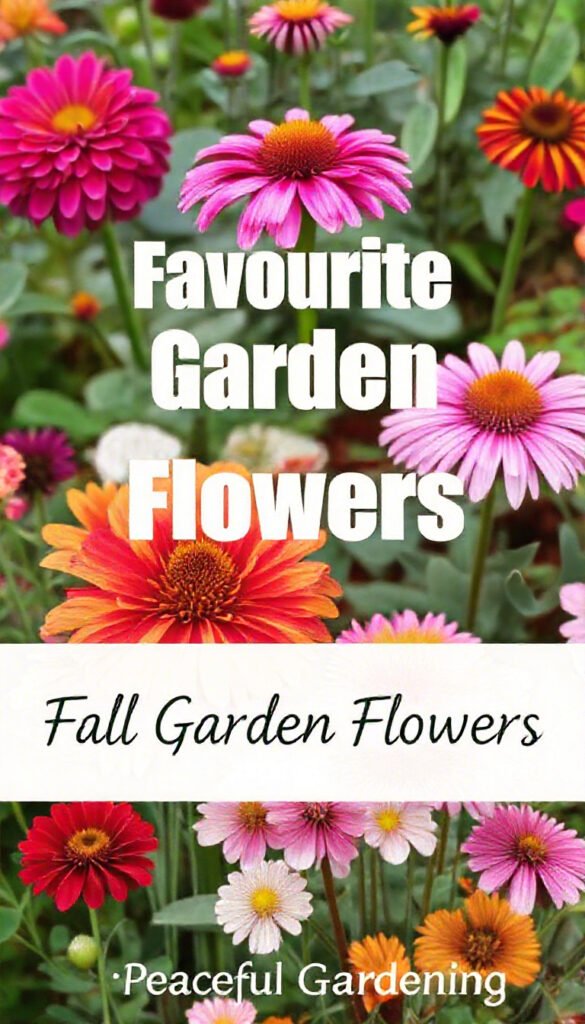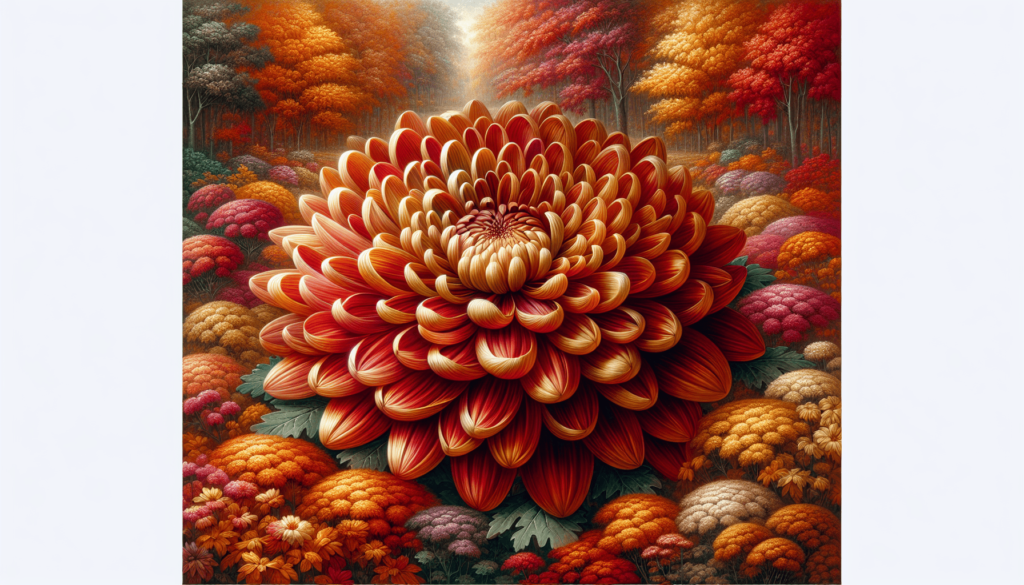Have you ever wandered through a garden in the fall, enveloped in the crisp air, and wondered which flowers best embody the beauty of the season? Fall gardens offer a spectacular array of colors, textures, and blooms that seem to mirror the changing leaves. The vibrant hues and rich scents make this time of year truly special for any gardener or nature enthusiast.
The Charm of Fall Gardens
I have always found something magical about fall gardens. There’s an enchanting quality to the way blooms contrast with the autumn leaves, and there’s nothing quite like the feel of a cool breeze while you admire the radiant splashes of color that characterize the season. The flowers that thrive during this time of year hold a special place in my heart, and I’d like to share a few of my favorites with you.
The Allure of Chrysanthemums
Chrysanthemums, or “mums” as they are fondly called, are often the stars of the fall garden. Their vivid shades of red, yellow, purple, and white bring life to any garden space. I adore mums for several reasons. For one, their blooms can last all the way until the first frost, which ensures that the beauty of my garden is extended deep into the season.
Why I Love Chrysanthemums
- Versatile Colors: The wide range of colors makes them perfect for any garden theme.
- Extended Bloom Period: Their ability to flourish until the frost ensures longevity.
- Resilient Nature: Mums are hardy and can withstand cooler temperatures better than many other flowers.
The Enigmatic Beauty of Aster
Asters are another wonderful addition to any fall garden. Their star-shaped flowers and cool, pastel tones provide a lovely contrast to the bolder colors of other fall blooms. I find asters to be particularly compelling due to their historical use for medicinal purposes and their symbolic meaning of love and patience.
Notable Characteristics of Aster
- Unique Flower Shape: The dainty, star-shaped flowers add a unique texture to your garden.
- Pastel Colors: Their soft colors complement the more intense fall shades beautifully.
- Historical Significance: Asters have been used for centuries in different cultures for various purposes.
Sedum: The Garden Workhorse
Sedums, particularly the “Autumn Joy” variety, are tough yet beautiful succulents that thrive in fall gardens. These plants are exceptional for their low maintenance and high reward. I appreciate sedums not just for their aesthetics, but also for their ability to attract pollinators like bees and butterflies even late into the season.
Benefits of Growing Sedum
- Low Maintenance: Requires minimal care compared to other fall flowers.
- Pollinator Friendly: Attracts insects that are beneficial to the garden ecosystem.
- Resilient: Highly resistant to drought and poor soil conditions, making them ideal for neglected corners of the garden.
The Cozy Warmth of Marigolds
Marigolds may be more commonly associated with summer, but certain varieties perform beautifully in the cooler temperatures of fall. Their golden blooms seem to capture the very essence of autumn sunlight, and they are known for their ability to repel pests, making them an invaluable addition to any garden.
Why Marigolds Are Perfect for Fall
- Pest Repellent: Acts as a natural deterrent to garden pests.
- Bright Hues: Radiates the warmth of autumn with their vibrant orange and yellow flowers.
- Long Bloom Season: Can continue blooming well into fall with proper care.
The Delicate Elegance of Japanese Anemone
Japanese Anemones bring a touch of grace to the fall garden with their delicate petals and gentle colors. I’ve found these flowers to be incredibly delightful for their ability to create a sense of calm and elegance among the often-brash fall hues.
Unique Traits of Japanese Anemone
- Elegant Blooms: Their soft, delicate flowers add a sophisticated charm.
- Longevity: They can bloom from late summer into early fall.
- Dynamic Visual Appeal: Their movement with the breeze adds a dynamic element to garden aesthetics.
Robust and Hardy: Black-Eyed Susan
Black-Eyed Susans are hardy perennials that thrive in the fall. Their bright yellow petals and dark centers can cheer up any garden surrounded by the deeper autumnal colors. These flowers symbolize encouragement and motivation, adding a philosophical touch to their cheerful appearance.
Key Features of Black-Eyed Susan
- Hardiness: Can withstand a variety of conditions.
- Color Contrast: Their bright coloration makes them stand out against fall foliage.
- Symbolic Meaning: Represents encouragement, making them a thoughtful choice for the garden.
The Aromatic Delight of Russian Sage
Russian Sage is another fall favorite with its spiky, silver-gray foliage and lavender-blue flowers. This plant provides a beautiful misty effect, much like the early morning fog typical of fall days. I find its aromatic quality to be particularly soothing, making my morning garden strolls even more enjoyable.
Highlights of Russian Sage
- Aromatic Leaves: Adds an olfactory layer to your garden experience.
- Visual Appeal: The silvery foliage and lavender flowers create a misty, enchanting look.
- Drought Tolerant: Thrives even in dry conditions, making it easy to care for.
The Sunny Joy of Helenium
Helenium, with its daisy-like flowers in shades of yellow, orange, and red, is another essential for the autumn garden. Commonly known as “sneezeweed,” these flowers can provide a vibrant pop of color that enhances the overall landscape. Their name might be off-putting, but don’t worry—they do not actually induce sneezing!
Why Helenium Stands Out
- Vibrant Colors: Their bright blooms add cheerful tones to the garden.
- Late Bloomers: They flower well into late summer and fall.
- Pollinator Magnet: Attracts butterflies and bees, promoting a healthy garden ecosystem.
How to Care for Fall Garden Flowers
Caring for fall flowers requires a bit of knowledge about their specific needs. Each type of flower has its own set of requirements, but there are general guidelines that can help ensure your garden thrives during the cooler months.
Watering Tips
Fall flowers generally need less water than their summer counterparts due to the cooler temperatures and reduced evaporation. However, soil moisture should still be monitored closely.
- Chrysanthemums: Require consistent watering but can tolerate short periods of drought.
- Asters: Prefer evenly moist soil, especially during blooming.
- Sedums: Thrive in well-drained soil and are drought-tolerant.
Soil and Fertilization
The soil quality and nutrients play a significant role in the health of your fall garden flowers.
- Japanese Anemone: Requires rich, well-drained soil. Adding compost can improve soil quality.
- Marigolds: Thrive in moderately fertile, well-drained soil. Too much fertilizer can reduce blooming.
- Russian Sage: Prefers well-drained soil with neutral to slightly alkaline pH levels.
Sunlight and Placement
Most fall flowers need plenty of sunlight to flourish, but some can tolerate partial shade.
- Black-Eyed Susan: Prefers full sun but can tolerate partial shade.
- Helenium: Grows best in full sun.
- Marigolds: Require full sun for the best blooms.

Using Fall Flowers in Garden Design
Incorporating fall flowers into your garden design can transform your space into an autumnal paradise. It’s all about playing with colors, textures, and heights to create visual interest and harmony.
Color Schemes
Think about how the colors of fall flowers will complement or contrast with the existing foliage and other elements in your garden.
| Flower Type | Color | Best Pairings |
|---|---|---|
| Chrysanthemums | Reds, yellows, purples, whites | Pair with asters and marigolds for contrast |
| Asters | Pastel blues, purples, whites | Use with Russian sage for a calming palette |
| Sedums | Pink, red, bronze | Mix with Black-Eyed Susans for variety |
| Marigolds | Golden yellow, orange | Combine with chrysanthemums |
| Japanese Anemone | White, pink, soft purples | Pair with sedum for elegance |
Texture and Height
Incorporate various textures and heights to create depth and layers in your garden design.
- Tall Plants: Russian sage and Japanese anemone can add vertical interest.
- Medium Plants: Chrysanthemums and Black-Eyed Susans work well in the mid-range.
- Low Plants: Sedums and marigolds can fill in the lower levels.
Seasonal Transition
Consider how your fall flowers will transition from the summer garden and into winter.
- Continuous Bloom: Some flowers, like chrysanthemums and marigolds, can bridge the gap from late summer to fall.
- Late Bloomers: Flowers like helenium can keep your garden colorful as other plants start to fade.
- Winter Preparation: Some flowers, particularly perennials like Black-Eyed Susans, need to be cut back as winter approaches.

Why Fall Flowers Matter
Fall flowers bring a different kind of vibrancy and charm to the garden, one that complements the transformative nature of the season. They offer not just visual pleasure but also emotional and ecological benefits.
Emotional Well-being
Tending to a fall garden can be a soothing and grounding activity. The riot of colors, the faint scent in the air, and the final blooms before winter create a comforting ambiance that can lift one’s spirits.
Ecological Benefits
Fall flowers are often critical for the garden’s ecosystem. They provide late-season nectar for pollinators preparing for winter and can offer habitat for various insects and small creatures.
Sustainability
Many fall flowers are perennials, meaning they come back year after year with minimal care. This not only makes gardening more sustainable but also allows you to develop a lasting relationship with your garden.

Concluding Thoughts
A garden truly comes into its own in the fall. The flowers that bloom during this season are resilient, vibrant, and uniquely suited to the challenges that come with cooler weather. From the striking chrysanthemums to the delicate Japanese Anemones, each flower adds its own special touch, turning a simple garden into a rich tapestry of autumnal beauty.
Gardening, in many ways, is a continuous learning experience. Each season brings new challenges and rewards, teaching me more about not just the plants I nurture, but also about patience, care, and the cycle of life itself. So, as the leaves begin to turn and the air gets crisper, I can’t help but look forward to the bursts of color that my favorite fall flowers will bring to my garden.
I hope these insights inspire you to cultivate your own autumnal oasis, where you can enjoy the wondrous display of nature’s fall palette. Each bloom is a reminder of the beauty that persists, even as the year gradually winds down.

My name is Michelle Warren, and I’m the founder of Peaceful Gardening. As a 10-year breast cancer survivor, I’ve discovered the profound therapeutic power of gardening. This journey has not only helped me recover but has also become my passion and a source of ongoing peace and joy.
Peaceful Gardening was born from my desire to share the healing benefits of gardening with others. Whether you’re facing health challenges, dealing with stress, or simply looking to connect more deeply with nature, this space is for you.
Over the past decade, I’ve cultivated not just plants, but a deep understanding of how gardening can positively impact mental health. I’ve worked with local community gardens, led workshops on mindful gardening practices, and collaborated with mental health professionals to develop gardening-based stress reduction programs.
Peaceful Gardening was born from my desire to share the healing benefits of gardening with others. Whether you’re facing health challenges, dealing with stress, or simply looking to connect more deeply with nature, this space is for you.
Here, you’ll find evidence-based advice on using gardening as a tool for mindfulness, stress relief, and emotional healing. I share personal stories, practical tips, and scientifically-backed information on how to create your own therapeutic garden space, no matter the size of your yard or balcony.
My mission is to help you discover the joy, peace, and healing that comes from nurturing plants and connecting with nature. Join me in exploring how the simple act of tending to a garden can transform your mental and emotional wellbeing.
Welcome to Peaceful Gardening – let’s grow together towards better mental health!”
